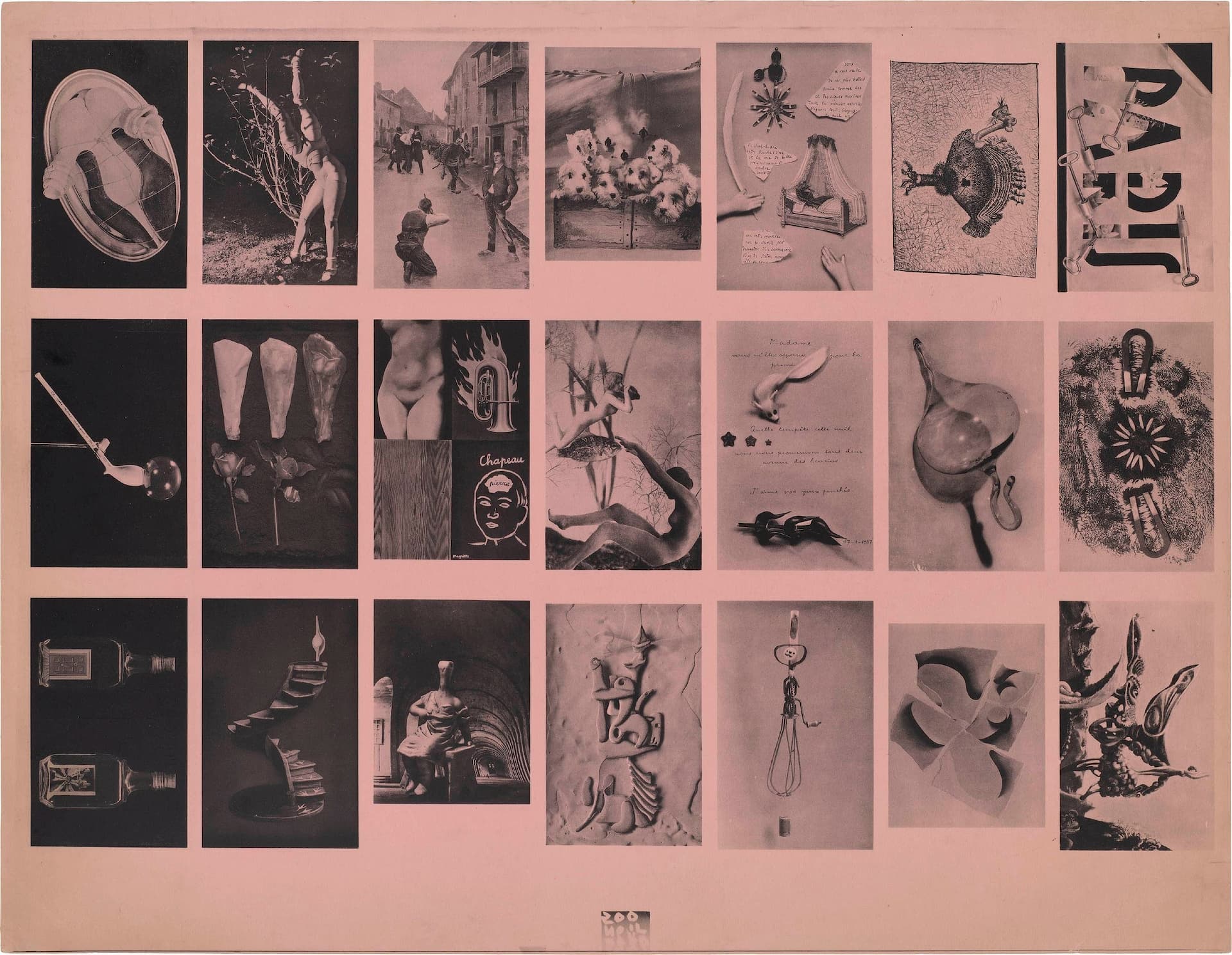
The city of Dresden presents the Archiv der Avantgarden — Egidio Marzona (ADA), a collection of 1.5 million 20th-century avant-garde and Bauhaus movement drawings, photographs, art journals, films, furniture items, books, posters, and household wares. One of fifteen museums of The Staatliche Kunstsammlungen Dresden (Dresden State Art Collections), ADA boasts an impressive collection amassed single-handedly by the German-Italian gallerist and collector Egidio Marzona. It is the first museum in Dresden to focus exclusively on avant-garde and Bauhaus art.

The first exhibition, Archive of Dreams. A Surrealist Impulse, features 300 of these works in their new home, the 18th-century Blockhaus, a former guard house at the foot of the city’s Augustus Bridge. The show is dedicated to André Breton’s Surrealist Manifesto, a century after its publication in 1924.
In a meta-nod to its source, the exhibition emphasizes the Surrealists’ own tendency toward archival practices, particularly through their Bureau of Surrealist Research, which opened in 1924 in Paris as a place for artists and writers to archive as well as discuss and analyze the output stemming from their own dreams.

Works from Marzona’s collection, like a set of Marcel Duchamp’s boxes and briefcases containing miniature two- and three-dimensional reproductions of his earlier works, are one example of this tendency. Meanwhile, across the space, photographs of Alexander Calder at work on Ballet and Circus, choreographed kinetic sculptures and miniatures based on his dreams from the mid-1940s demonstrate the reach of the ideas propagated by the Bureau of Surrealist Research.

But Archive of Dreams’ curator, Przemysław Strożek, doesn’t limit the show to the unconscious. Biomorphic drawings made by Yves Tanguy in the 1930s reference the Surrealists’ interest in presenting living as fantastical organisms. The cumulative effects of the horror of World War II are summed up in grim and outright apocalyptic images from the 1940s by Giorgio de Chirico, André Masson, and the Czech artist Toyen (Marie Čermínová). With the 1960s comes Pop Art, and there’s Claes Oldenburg’s “Nose,” a dream-like, Surrealist-influenced drawing of an enormous proboscis that seems to be barreling down a hill.
The exhibit, as well as further shows pulled from Marzona’s archive (the ADA will stage two exhibitions a year) takes place on the museum’s all-new ground floor. Construction on the Blockhaus began in 1732, and the building was added onto several times before the neighborhood, Neustädter Markt, was almost entirely destroyed by Allied bombs in 1945 and the building was left a ruin. The DDR rebuilt the Blockhaus for use as a House of German-Soviet Friendship between 1978 and 1982; after reunification, the building was taken over by the state of Saxony, but severe flooding of the Elbe River in 2013 left the space in ruins once again. After a six-year renovation by the firm Nieto Sobejano, the Blockhaus’s historic outer walls are now complemented by an ultra-modern concrete interior, punctuated by a knockout spiral staircase connecting the main exhibition space with a publicly-accessible research floor.

Hundreds of art and architecture books line the Study Platform. It currently features graphic art by the Barcelona-based Mexican artist Erick Beltrán, the first of a series of creatives invited to create site-specific work based on their interactions with the archive. There are several desks, a glassed-in office housing 5000 more pieces from the archive tucked away in binders (a floating cube at the heart of the building holds much of the rest), and for now, a smattering of the household objects Marzona collected, like Italian architect and designer Ettore Sottsass’s bright-red typewriter named “Valentine,” and his corded telephone, an oversized device of right angles and primary colors.

The Blockhaus stands at the foot of the Augustus Bridge, which connects Dresden’s Altstadt and Neustadt, two halves of the city’s remaining historic center. The museum’s open garden borders the grassy banks of the Elbe, and its hours have been set to work for locals as well as visitors to the city’s Baroque and Neoclassical architecture (on Tuesdays through Fridays, the museum is open until 9pm). From Max Ernst’s Histoire naturelle to Matteo Thun’s Mickey Mouse-inspired pitcher, the ADA is a collection emblematic of the 20th century, but one that has been given the best of a 21st century home.
Cover photo: Georges Hugnet, 21 Cartes postales surréalistes, Paris 1937
[Written May 2024]
Learn more about exciting exhibitions in Germany


Leave a Reply